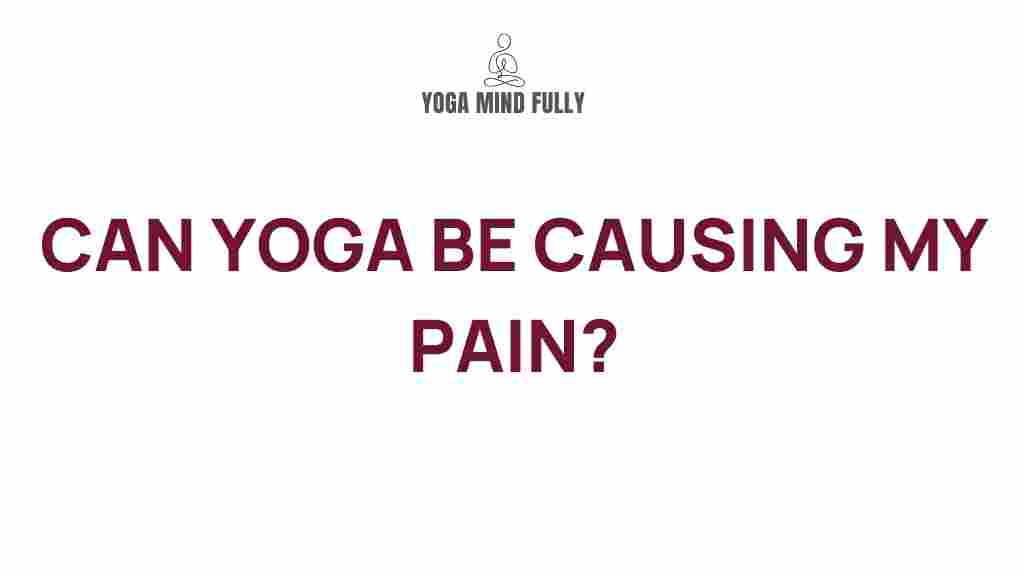The Surprising Link Between Yoga and Chronic Pain
Chronic pain affects millions of people worldwide, often leading to a diminished quality of life. While traditional treatments such as medications and physical therapy provide relief for some, many individuals seek alternative methods to manage their pain. One such method that has gained popularity in recent years is yoga. But what makes yoga such an effective tool for chronic pain management?
In this article, we will explore the connection between yoga and chronic pain, delving into the science behind it, specific poses that can help, and tips for integrating yoga into your pain management routine. By the end, you’ll understand why yoga is more than just a form of exercise—it’s a pathway to holistic healing.
What Is Chronic Pain?
Before diving into the benefits of yoga, it’s important to understand what chronic pain is. Chronic pain is defined as pain that lasts longer than three months, often persisting despite medical treatment. Common conditions associated with chronic pain include:
- Arthritis
- Fibromyalgia
- Lower back pain
- Neuropathy
- Migraines
This type of pain can be both physically and emotionally exhausting, often leading to depression, anxiety, and a reduced ability to perform daily activities.
How Yoga Addresses Chronic Pain
Yoga is a centuries-old practice that combines physical postures, breathing exercises, and mindfulness techniques. These elements work together to create a powerful tool for managing chronic pain. Here’s how:
- Improves Flexibility and Strength: Yoga stretches and strengthens muscles, alleviating stiffness and improving mobility, which can be especially beneficial for conditions like arthritis or back pain.
- Reduces Inflammation: Studies have shown that yoga can lower inflammatory markers in the body, helping to reduce pain caused by chronic inflammation.
- Promotes Relaxation: Through breathing exercises and meditation, yoga helps calm the nervous system, reducing the perception of pain.
- Boosts Mental Health: Yoga reduces stress and anxiety, which can often exacerbate chronic pain.
For a deeper dive into the science of yoga and chronic pain, visit this research article on yoga’s health benefits.
Best Yoga Poses for Chronic Pain Relief
If you’re ready to try yoga to manage your chronic pain, start with these beginner-friendly poses. Always consult with a healthcare provider before starting a new fitness routine.
- Child’s Pose (Balasana): This pose gently stretches the lower back, hips, and thighs, offering relief from tension and pain.
- Cat-Cow Stretch: A dynamic movement that improves flexibility in the spine and reduces stiffness.
- Downward-Facing Dog (Adho Mukha Svanasana): A full-body stretch that alleviates pain in the back, shoulders, and legs.
- Bridge Pose (Setu Bandhasana): Strengthens the lower back and glutes, offering support for the spine.
- Savasana (Corpse Pose): Promotes deep relaxation and mindfulness, helping to manage pain perception.
For a detailed guide on how to perform these poses, check out our Yoga Pose Library.
Step-by-Step Guide to Starting a Yoga Practice
Starting a yoga practice for chronic pain doesn’t have to be intimidating. Follow these steps to get started:
- Consult Your Doctor: Ensure that yoga is safe for your specific condition.
- Find a Suitable Class: Look for classes or online programs designed for beginners or those with chronic pain.
- Start Slowly: Focus on gentle poses and avoid pushing your body too hard.
- Use Props: Items like yoga blocks and straps can help you modify poses to suit your needs.
- Practice Mindfulness: Incorporate breathing exercises and meditation to maximize the benefits of yoga.
- Be Consistent: Aim to practice yoga several times a week for the best results.
Common Challenges and How to Overcome Them
As with any new activity, practicing yoga for chronic pain may come with challenges. Here are some troubleshooting tips:
- Lack of Flexibility: Remember that yoga is about progress, not perfection. Use props and modify poses as needed.
- Pain During Poses: Stop immediately if a pose causes pain. Consult a yoga instructor or physical therapist for guidance.
- Consistency Issues: Set realistic goals, such as practicing for 10–15 minutes a day, and gradually build your routine.
The Role of Yoga in a Holistic Pain Management Plan
Yoga is most effective when used as part of a comprehensive pain management plan. Consider combining yoga with:
- Physical therapy
- Dietary changes
- Medications or supplements
- Mindfulness practices
By taking a holistic approach, you can address the physical, emotional, and psychological aspects of chronic pain.
Conclusion
Yoga offers a unique and effective way to manage chronic pain, addressing both the physical and emotional challenges associated with it. Through improved flexibility, reduced inflammation, and enhanced mental well-being, yoga can provide lasting relief for those living with chronic pain.
Whether you’re new to yoga or have previous experience, it’s never too late to incorporate this powerful practice into your pain management routine. Take the first step today and discover how yoga can transform your life.
For more tips and resources on starting your yoga journey, visit our Yoga for Beginners Guide.
This article is in the category Mind & Body Balance and created by YogaMindFully Team
